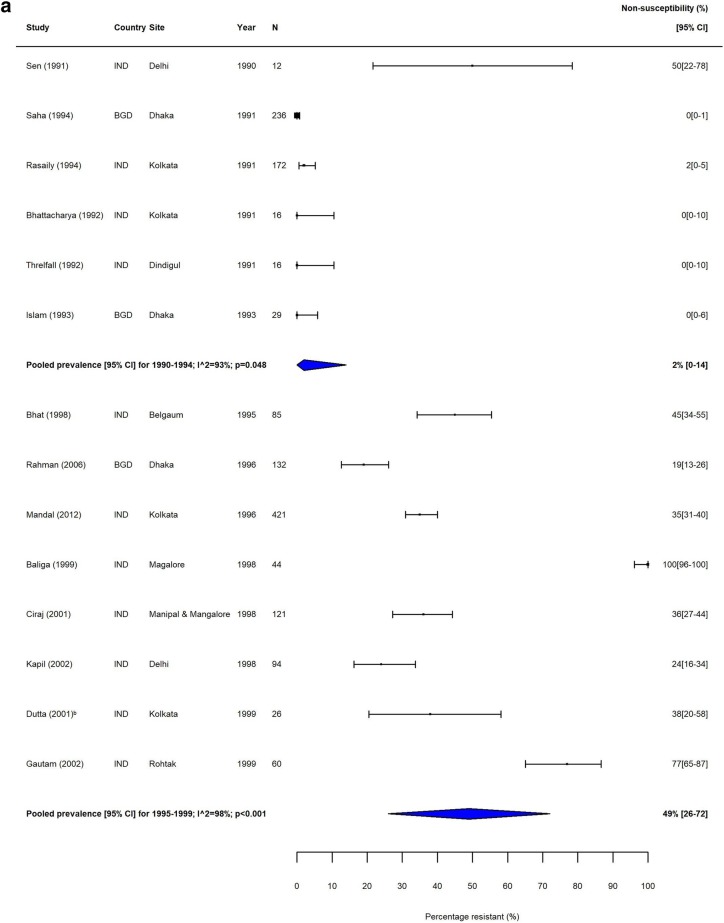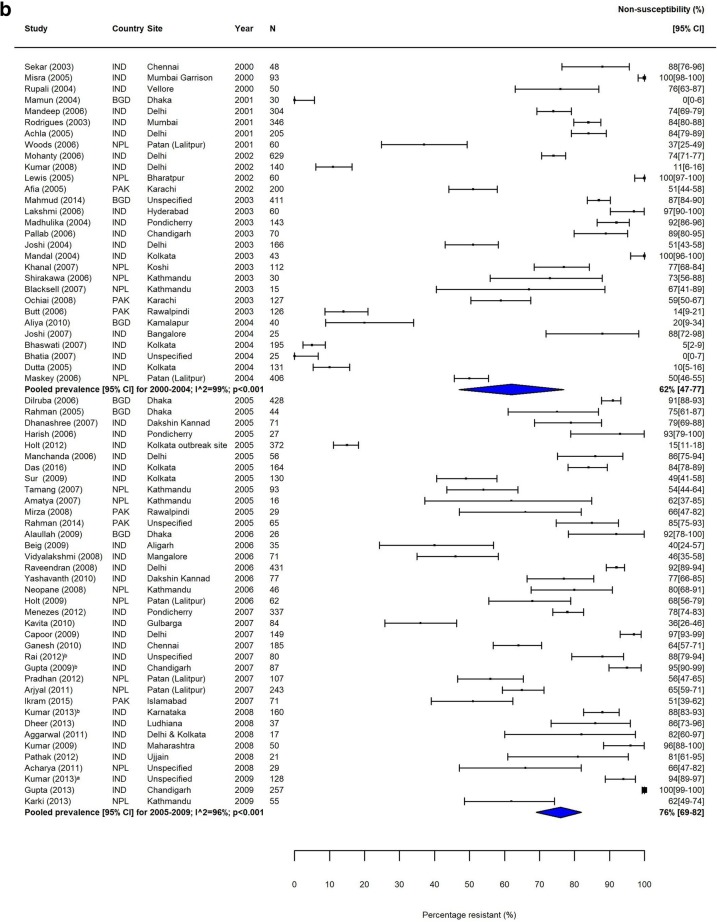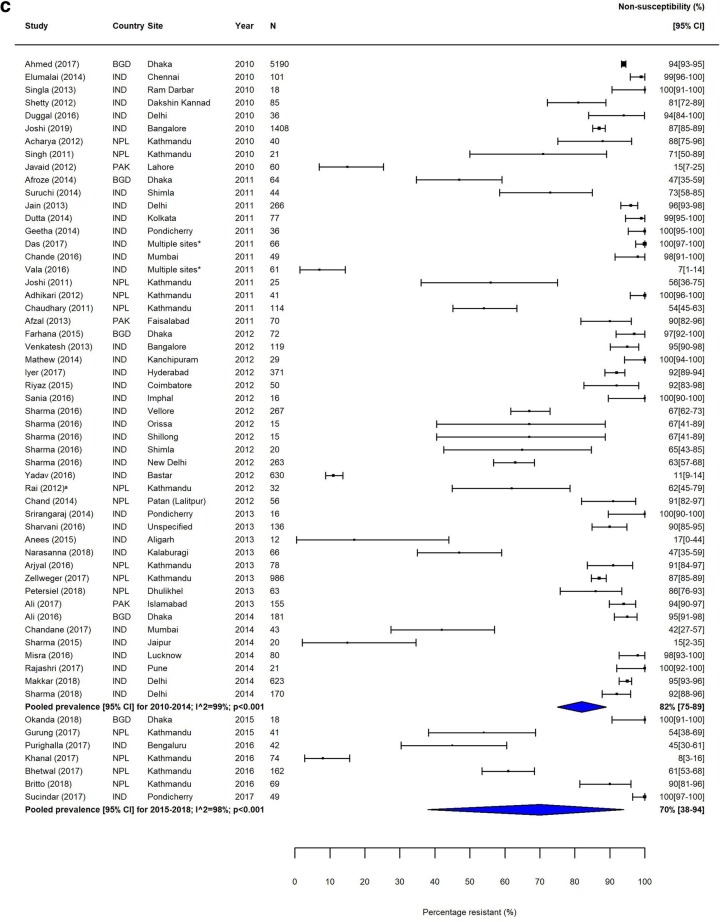Fig. 4.
FQNS S. Typhi in South Asia. Forest plots illustrating the prevalence of FQNS amongst S. Typhi in South Asia, grouped by 5‐year time periods. Individual study results are displayed with 95% confidence intervals; the pooled prevalence [95%CI] for each subgroup is represented by the blue diamonds: a 1990–1999, b 2000–2009, and c 2010–2018. To allow the analysis of resistance trends over time despite typhoid‐specific breakpoint changes for ciprofloxacin (CLSI, 2012) coming into effect during our study (1990–2018), we categorised intermediate (ciprofloxacin MIC 0.12–0.5 μg/ml) and resistant strains isolates (≥ 1 μg/ml) according to the updated breakpoints, as well as isolates with ‘decreased ciprofloxacin (or fluoroquinolone) susceptibility’ (ciprofloxacin MIC 0.125–1.0 μg/ml) and nalidixic acid-resistant strains isolates (as proxy marker for ‘decreased ciprofloxacin (or fluoroquinolone) susceptibility’) as fluoroquinolone non‐susceptible (FQNS)



